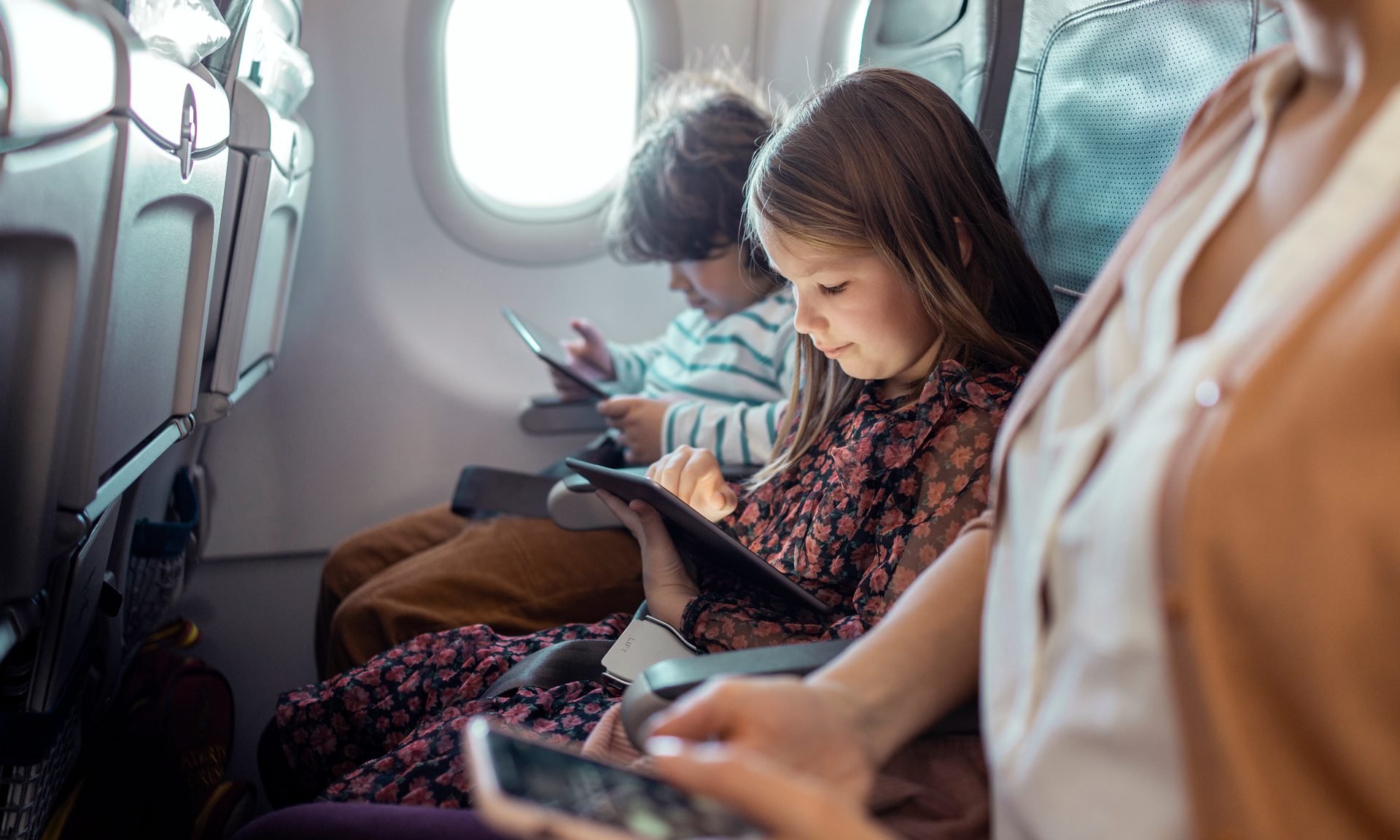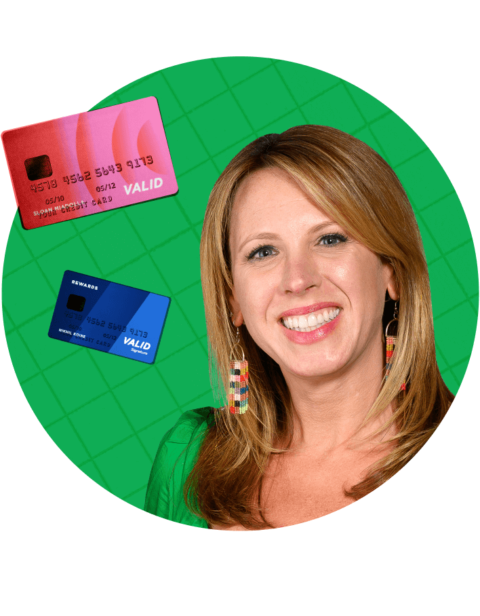How Families Can Get Seats Together on a Plane
Airlines are making seat selection more difficult and expensive, which can be particularly tough for families.

Many or all of the products on this page are from partners who compensate us when you click to or take an action on their website, but this does not influence our evaluations or ratings. Our opinions are our own.
Booking airfare is a lot more complicated than it used to be. Should you choose basic economy or main cabin? Do you want the “bundle” or would you rather pay “a la carte”? And how much are you willing to pay for a seat?
Seat selection is a particularly thorny issue for those traveling with kids. Now that airlines charge to select “preferred” seats, such as those near the front or by the aisle or window, families can pay hundreds of dollars simply for the privilege to sit together on a round-trip flight.
🤓 Nerdy Tip
United recently announced a new family seating policy that allows kids 12 years old and under to sit next to an accompanying adult on basic economy fares at no extra cost. American Airlines, Alaska Airlines and Frontier also guarantee complimentary family seating. Is paying extra for seats an inevitability for families? Or can these pesky fees be minimized or circumvented altogether? And why do they even exist in the first place?
What are seat selection fees?
Seat selection fees have become more common for a reason — they drive a lot of revenue for airlines. Low-cost airlines Spirit and Frontier earned roughly half of their revenue from “ancillary fees” in 2020, according to a report by IdeaWorksCompany, an industry analytics firm.
Ancillary fees also tend to mislead consumers. In one 2020 study in the journal Marketing Science, participants who saw ancillary fees “dripped” throughout the checkout process ended up paying more overall than those who saw the total costs upfront. So a $20 fee to select a seat might not seem like much, but it can add up quickly, and can transform an apparently cheap airfare into a pricey one.
The U.S. Department of Transportation has issued a notice to improve transparency on some ancillary airline fees, such as those for carry-on bags. But so far seat selection fees are getting a pass, which means they’re not going anywhere anytime soon.
Win Private Travel Rewards Consultation ($250 value)
Get the ‘cheat codes’ to using travel points and miles so you can spend less cash. 📥 Sign up for our free newsletter before Jan. 30 and enter to win a 1:1 travel rewards coaching strategy session.

How to sit together on a flight
Are airlines required to seat families together? No. That said, the DOT notice specifically calls for more transparency for parents who are trying to select a seat for their young children.
Until the rules change, however, parents are stuck with a tough choice: Cough up the cash to ensure the family sits together or skip seat selection and risk getting separated. For example, Spirit says gate agents and flight attendants will try to sit parents with children under the age of 14, but it cannot guarantee it.
To select a seat without overpaying, try to:
- Choose seats in the back half of the plane. These usually carry fewer or no fees to select, and are the last to be selected by other passengers.
- Pick an airline with lower seat selection fees (see below).
- Avoid basic economy fares. These often carry restrictions on seat selection, and make family travel especially difficult.
Remember that children under two years old can fly for free and do not require a seat (though some parents prefer to buy a seat anyway).
Seat selection is always optional, whether flying solo or with a family of 10. It might seem nerve-wracking to head to the airport without confirmed seat assignments, but many families do it as a way to save money.
Yes, you can skip seat selection
While airlines want to make it seem like families have to select seats in order to sit together, it’s rarely this black and white. Most gate agents will work with families — even those without seat assignments — to get everyone seated together, when possible. It might mean bumping the family further back in the plane, but young children will not be left unattended with strangers (for everyone’s sake).
In other words, you can skip seat selection altogether and (usually) remain seated with your companions.
🤓 Nerdy Tip
Skipping seat selection doesn’t mean you or your family won’t get a seat. It just means you’ll have to wait until later in the process to get one assigned. Skipping this step might not be as easy as it sounds. Many airlines now include seat selection as part of the checkout process and make it seem like selecting — and paying for — a seat is a required step.
If you don’t want to pay these fees, find a way to skip this step, and don’t get scared by the pop-ups and warnings the airlines use to make it seem mandatory.
Which airlines charge the most?
Discount airlines like Spirit and Frontier may have pioneered the a la carte airfare model, but traditional airlines have jumped on board in order to compete. Not all airlines charge the same amount — or charge for seat selection at all.
NerdWallet performed an analysis of seat selection fees by comparing several routes across the major U.S. airlines. This revealed that some are charging far more for seat selection than others.
Southwest Airlines is not included here, because it’s an outlier: It doesn’t charge for — or allow — seat selection at all.
So, which airlines don't charge for seat selection? Alaska and Hawaiian Airlines are the only airlines that allow passengers to select a seat for free, though it may be near the back of the plane.
American, Delta, Frontier and Spirit all charged more than $10 each way for seat selection when applicable, even for lousy seats. Passengers should skip these airlines (or the seat selection process altogether) if they want to avoid such high fees.
Watch out for 'upgrades'
Another airline invention from the past decade: Charging extra for “main cabin preferred” (or similar) seats that offer little more than a few inches of extra legroom. These seats often look similar to regular economy seats in the seat selection screen, but can carry hefty fees.

For example, an exit row seat on a nonstop Delta flight from Atlanta to Seattle cost $130 each way, or $260 more total — on a $358 flight. This 73% markup might make sense for particularly long-legged passengers, but for most travelers, these “upgrades” aren’t worth it.
To make it even more confusing, many airlines now have “premium economy” or “main cabin comfort” seats that do offer benefits like free drinks and priority boarding. The benefit of these seats varies considerably by airline. Some offer wider, more comfortable seats, while others offer standard seats, but throw in a free alcoholic drink and snack plate.
For children with short legs and little need for a cocktail, the markup on these upgraded seats is usually wasted.
The edge of your seat
Airlines want to charge you to select a seat because it costs them nothing. This incentive has led many airlines to push harder and harder, making “seat selection fees” seem like an unavoidable add-on charge for most fares.
For families, this decision is particularly fraught. Who wants to get separated from their preschooler on a six-hour flight? Yet it’s rarely so straightforward. Many families skip seat selection fees and end up sitting together, no problem.
For some people, the peace of mind that comes with knowing where the whole family will be seated is well worth the fee. For others, avoiding the fee and relying on the gate agents (and fellow passengers) to shuffle around works just fine.
It really comes down to risk tolerance.
How to maximize your rewards
You want a travel credit card that prioritizes what’s important to you. Here are some of the best travel credit cards of 2026:
- Flexibility, point transfers and a large bonus: Chase Sapphire Preferred® Card
- No annual fee: Wells Fargo Autograph® Card
- Flat-rate travel rewards: Capital One Venture Rewards Credit Card
- Bonus travel rewards and high-end perks: Chase Sapphire Reserve®
- Luxury perks: American Express Platinum Card®
- Business travelers: Ink Business Preferred® Credit Card
Article sources
NerdWallet writers are subject matter authorities who use primary,
trustworthy sources to inform their work, including peer-reviewed
studies, government websites, academic research and interviews with
industry experts. All content is fact-checked for accuracy, timeliness
and relevance. You can learn more about NerdWallet's high
standards for journalism by reading our
editorial guidelines.
NerdWallet's 2026 Best All-Purpose Travel Rewards Card
Chase Sapphire Preferred® Card 
Travel
Hotel

WHY OUR NERDS LOVE IT: For a modest fee, you’ll earn rich rewards in many categories, plus access to multiple transfer partners, an annual hotel credit, anniversary points and a big sign-up bonus worth at least $750 toward travel. 🤩
More like this
Related articles








